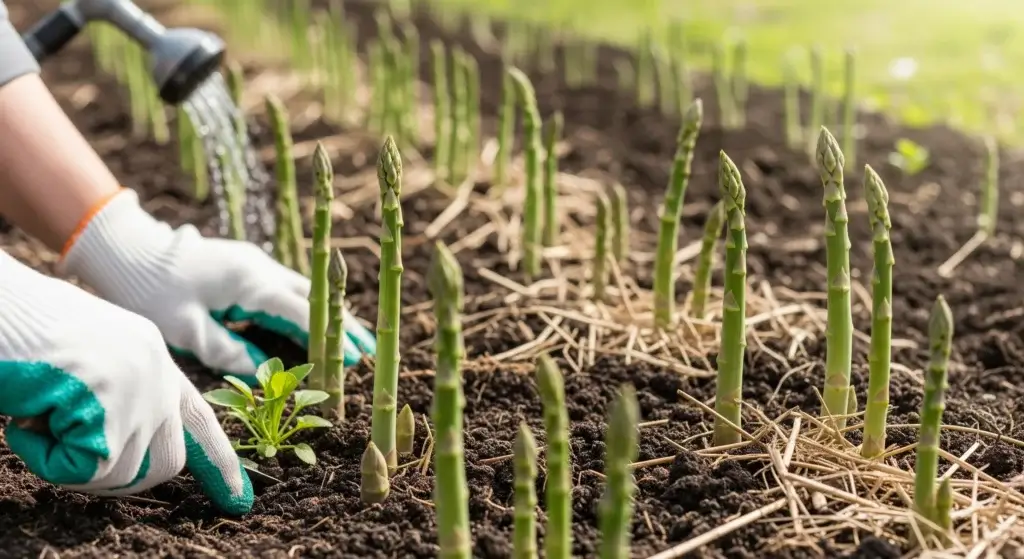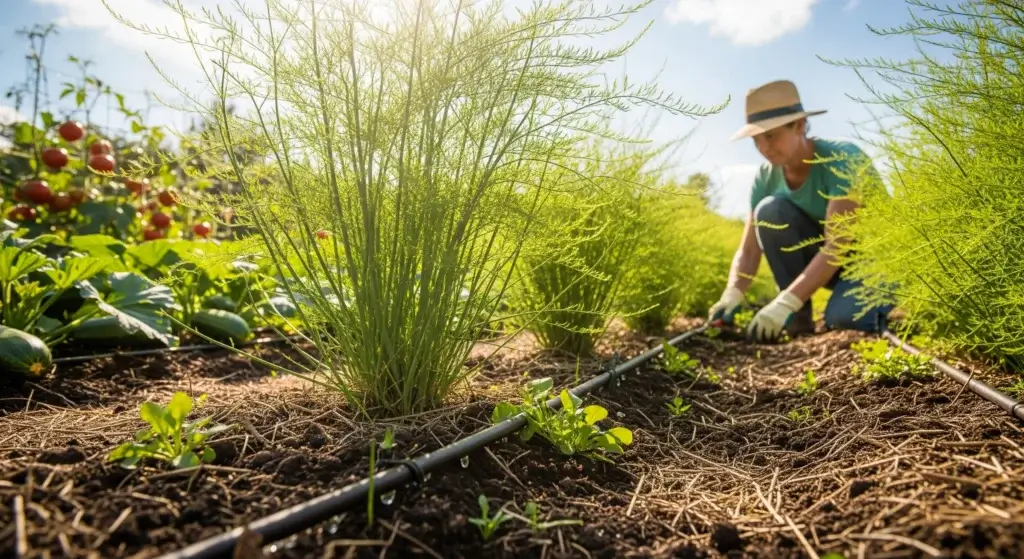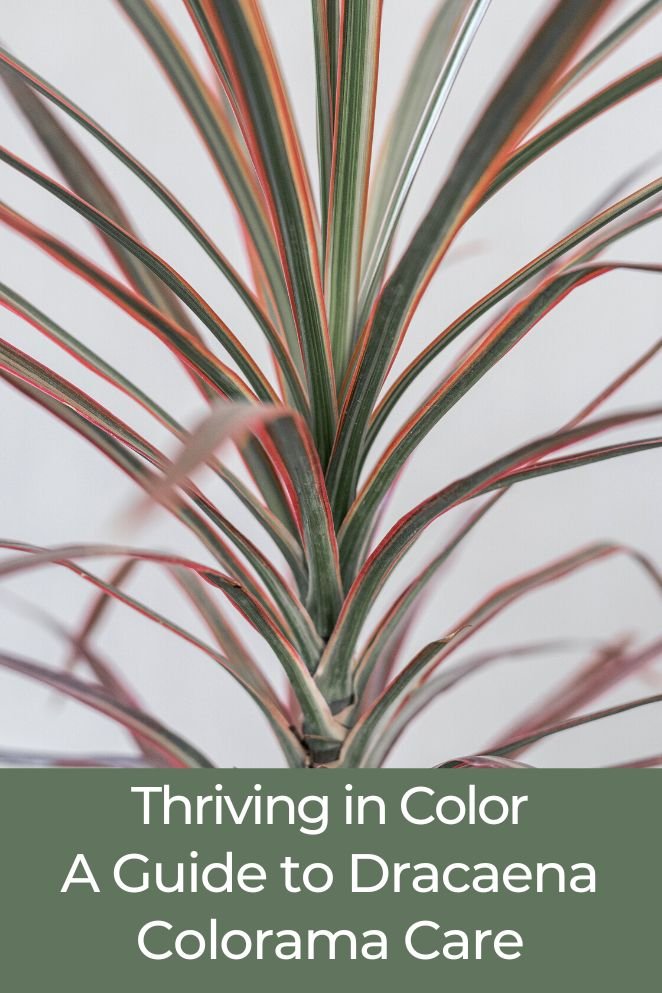
Dracaena Colorama is an increasingly popular houseplant, cherished for its vibrant and variegated leaves.
To help you provide the best care for your Dracaena Colorama, we have compiled this detailed care guide, covering light, temperature, water, humidity, soil, and fertilizer requirements, as well as maintenance, propagation, and common pest and problem management.
How Do You Take Care of a Dracaena Colorama?
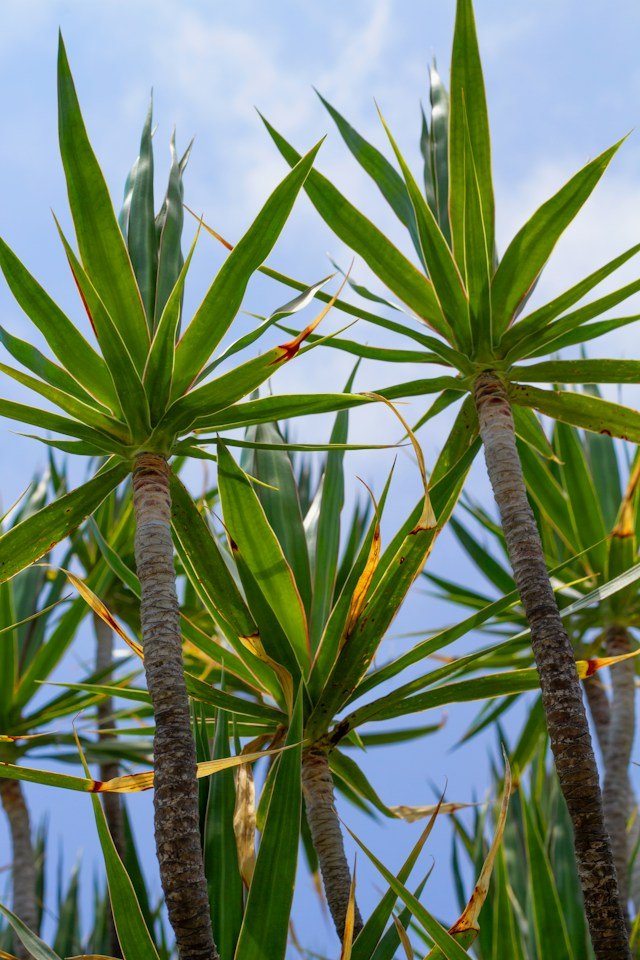
Light requirements
The Dracaena Colorama thrives in environments with medium to bright indirect sunlight.
While it can endure low light conditions, it’s crucial to shield it from prolonged direct sunlight exposure to prevent leaf burn.
Signs of inadequate light include pale leaves, slow growth, and the development of small new leaves.
Striking the right balance ensures the optimal growth and vibrancy of your plant.
- Read also: A Guide on Lavender Plant Watering Tips
- Read also: A Guide to Elephant Ear Plant Watering Care
Temperature requirements
Maintaining a comfortable room temperature is key for your Dracaena Colorama, with the ideal range falling between 60-80°F (16-27°C).
Caution should be exercised to avoid exposing the plant to temperatures below 60°F, as it is sensitive to the cold and may incur damage from chilly drafts.
Water requirements
During the active growing season from spring to mid-autumn, adopt a weekly watering routine for your Dracaena Colorama.
However, as winter approaches, it’s prudent to reduce watering frequency.
Allowing the soil to dry out between waterings is crucial to prevent overwatering, a common culprit of root rot.
Humidity requirements
Dracaena Colorama thrives in average humidity environments, making it well-suited for typical indoor conditions.
While it can tolerate lower humidity levels, the plant will benefit from regular misting, especially during dry periods.
Soil requirements
Selecting an appropriate soil mix is vital for the well-being of your Dracaena Colorama.
A well-draining potting mix, enriched with perlite or vermiculite to enhance drainage, is an ideal choice.
This ensures proper aeration for the plant’s roots, promoting overall health.
Fertilizer requirements
In the active growing season of spring and summer, feed your Dracaena Colorama every two weeks with well-balanced plant food.
However, it’s advisable to refrain from fertilizing during the winter months when the plant enters a dormant phase. This tailored feeding schedule supports robust growth and vitality.
Pruning and maintenance
To uphold the health and aesthetics of your Dracaena Colorama, regular pruning is essential.
Trim off any browning or dead leaves to keep the plant tidy and reduce the risk of pest infestations.
This proactive approach contributes to the longevity and visual appeal of your cherished indoor companion.
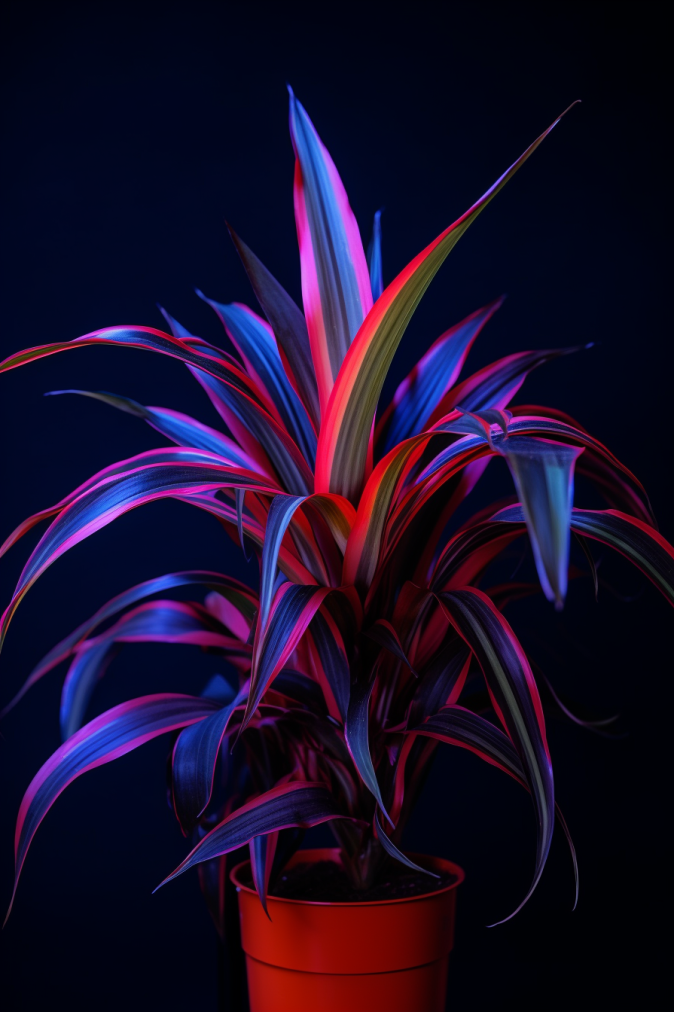
Repotting Dracaena Colorama
Step by Step Repotting
Recognizing the need for repotting
It’s essential to keep an eye on your Dracaena Colorama’s growth.
When you observe the roots beginning to outgrow their current container or if the pot has become too cramped, it’s a clear sign that repotting is in order.
This process ensures the continued health and vitality of your plant.
Choosing the right time
Spring is generally the best time to embark on the repotting journey for your Dracaena Colorama.
During this season, the plant is entering its active growth phase, allowing it to recover more swiftly from the transplantation process.
Selecting an appropriate pot
Opt for a low, wide pot to provide stability for the Dracaena Colorama, especially considering its potential height and top-heaviness.
This design prevents the plant from becoming unsteady or toppling over as it grows.
Ensure the new pot has drainage holes to facilitate proper water drainage, preventing waterlogged soil.
Preparing the potting mix
Choose a soil-based potting mix for your Dracaena Colorama, enriched with perlite or vermiculite to enhance drainage.
This combination promotes a well-aerated environment for the roots, preventing issues like waterlogging and promoting healthy growth.
Repotting Process
- Watering: Before repotting, ensure the soil is slightly moist but not overly saturated. This makes it easier to remove the plant from its current container.
- Gentle extraction: Carefully remove the Dracaena Colorama from its existing pot, gently separating the roots from the soil.
- Inspecting the roots: Take the opportunity to inspect the roots. Trim any damaged or rotting roots using clean, sharp scissors or pruning shears.
- Placing in new pot: Position the Dracaena Colorama in the center of the new pot, adding fresh potting mix around the sides until the roots are adequately covered.
- Watering after repotting: Once repotted, water the Dracaena Colorama thoroughly. Allow excess water to drain away, and place the plant in a shaded area for a few days to minimize stress during the acclimatization period.
Post-Repotting Care
Place your freshly repotted Dracaena Colorama in an area with indirect sunlight to aid its recovery.
Avoid fertilizing for a few weeks to allow the plant to adjust to its new environment.
Resume regular care routines once you notice signs of renewed growth and stability.
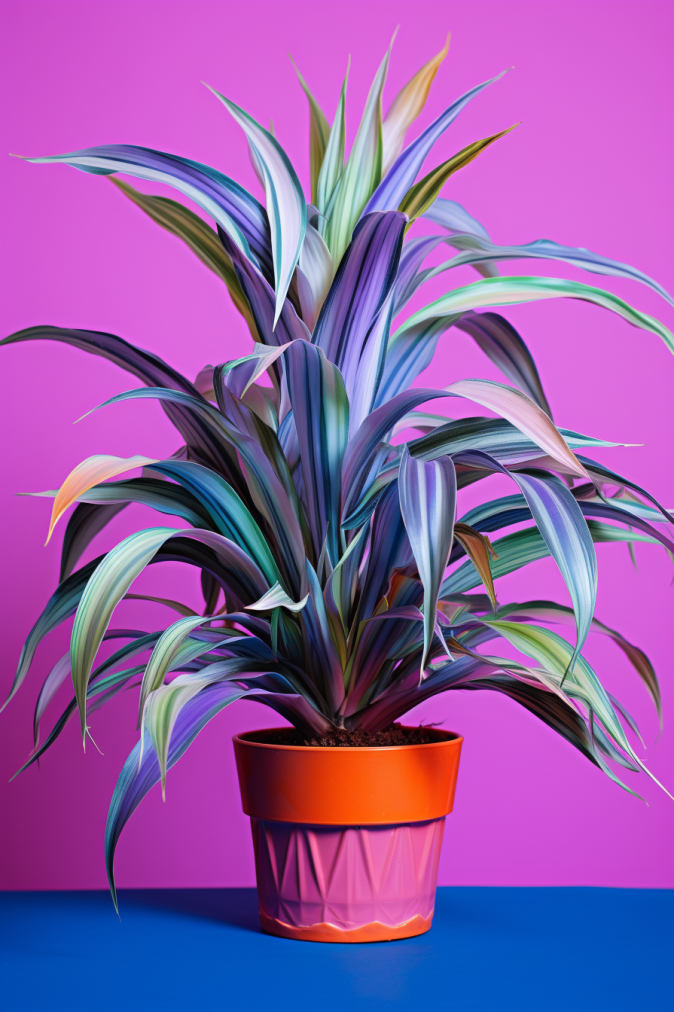
Dracaena Colorama Propagation Guide
Steps for propagation
- Selecting the stem cutting: Choose a healthy stem with several leaves for your cutting. Ensure the stem is free from any diseases or pests.
- Cutting preparation: Use sharp scissors or pruning shears to cut the selected stem. Make a clean, precise cut just below a leaf node, where leaves attach to the stem.
- Allowing callusing: Place the cut end of the stem in a dry, shaded area for a day or two to allow it to callus. This step helps prevent potential rotting when the cutting is planted.
- Preparing the potting mix: While the cutting is callusing, prepare a well-draining potting mix. A mixture of soil and perlite or vermiculite works well to promote proper drainage for the developing roots.
- Planting the cutting: Once the cutting has formed a callus, plant it in the prepared potting mix. Make a small hole in the soil with a stick or your finger and insert the cut end of the stem into the hole.
- Creating a humid environment: To encourage root development, place the potted cutting in a warm, humid environment.
- Monitoring and watering: Keep a close eye on the cutting’s moisture levels. Water sparingly, ensuring the soil remains consistently moist but not waterlogged.
- Root development: In a few weeks, check for signs of root development. Gently tug on the cutting, and if you feel resistance, roots have likely formed.
Transplanting
Once the cutting has developed a robust root system, it’s ready for transplantation into a larger container or its designated spot in your garden.
Follow standard care practices for your mature Dracaena Colorama.
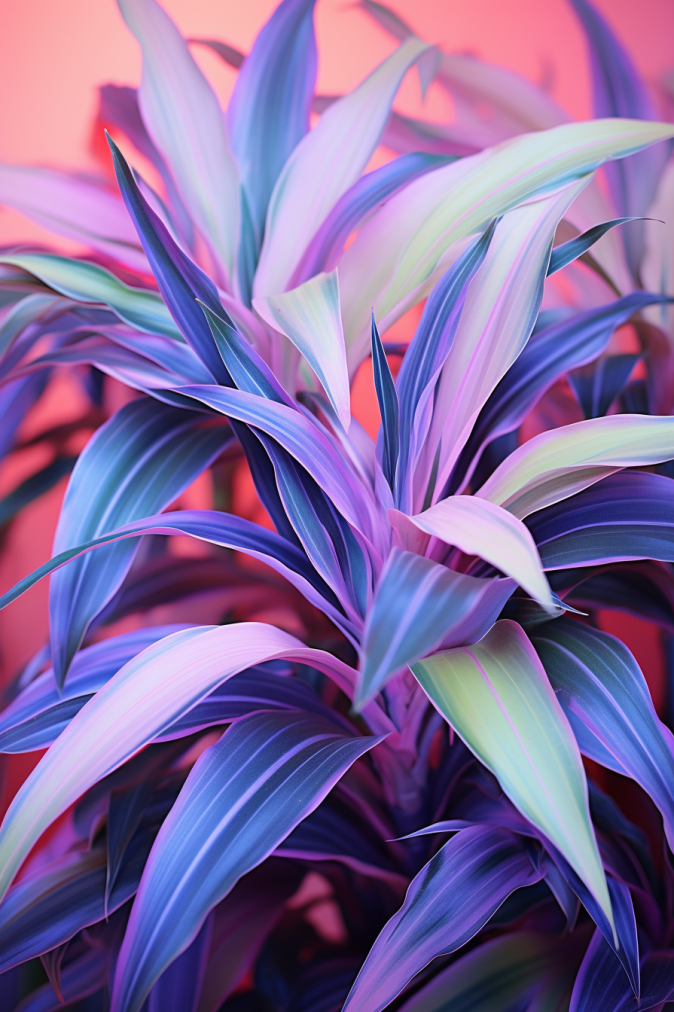
Common Pests and Problems
Dracaena Colorama is generally a low-maintenance plant, but it can be susceptible to a few issues.
Some common problems include leggy growth, yellowing leaves, leaf drop, and potential pest infestations.
Leggy growth
Leggy growth, characterized by elongated stems and sparse foliage, often indicates insufficient light exposure.
To remedy this issue, relocate your Dracaena Colorama to a spot with more indirect sunlight.
Ensuring adequate light levels fosters compact, lush growth, enhancing the overall aesthetics of the plant.
Yellowing leaves
Yellowing leaves are a common concern among Dracaena Colorama owners and can signal overwatering.
To mitigate this issue, adopt a cautious watering approach, allowing the soil to dry out between waterings.
Avoiding waterlogged conditions promotes optimal root health and prevents the onset of leaf discoloration.
Leaf drop
Sudden leaf drop can be alarming but is typically a response to environmental stressors such as drafts or temperature fluctuations.
Maintaining consistent environmental conditions, including temperature and humidity levels, helps prevent this issue.
Additionally, minimizing sudden changes in the plant’s surroundings mitigates stress and reduces the likelihood of leaf drop occurrences.
Pests
While Dracaena Colorama is generally resilient to pests, occasional infestations may occur, posing a threat to the plant’s well-being.
Common pests such as spider mites or mealybugs can target the plant, causing damage if left unchecked.
Promptly addressing signs of pest infestation is crucial. Implement appropriate pest control measures, such as insecticidal soaps or neem oil, to eradicate pests and safeguard the health of your Dracaena Colorama.
- Read also: Succulents Watering Tips
- Read also: The Ultimate Aloe Plant Watering Care Guide

Conclusion
Enhance your indoor space with the exquisite charm of Dracaena Colorama—a stunning and easy-to-care-for plant.
This botanical beauty effortlessly brings nature’s elegance into your home.
By adhering to the comprehensive care guidelines provided in this guide, you can guarantee the thriving health of your Dracaena Colorama.
Allow its vibrant and variegated foliage to continue gracing your living environment with its enduring allure.
FAQs
No, Dracaena Colorama is generally a low-maintenance plant, making it an excellent choice for both beginner and experienced plant enthusiasts.
Yes, the leaves of Dracaena Colorama are toxic to both pets and humans. Ingestion can cause mouth and stomach irritation, potentially leading to vomiting.
During the active growing season in spring and summer, feed your Dracaena Colorama every two weeks with a portion of well-balanced plant food.
Leggy growth is often a sign of inadequate light. To address this issue, move the plant to a location with more indirect sunlight to encourage compact and healthy growth.

